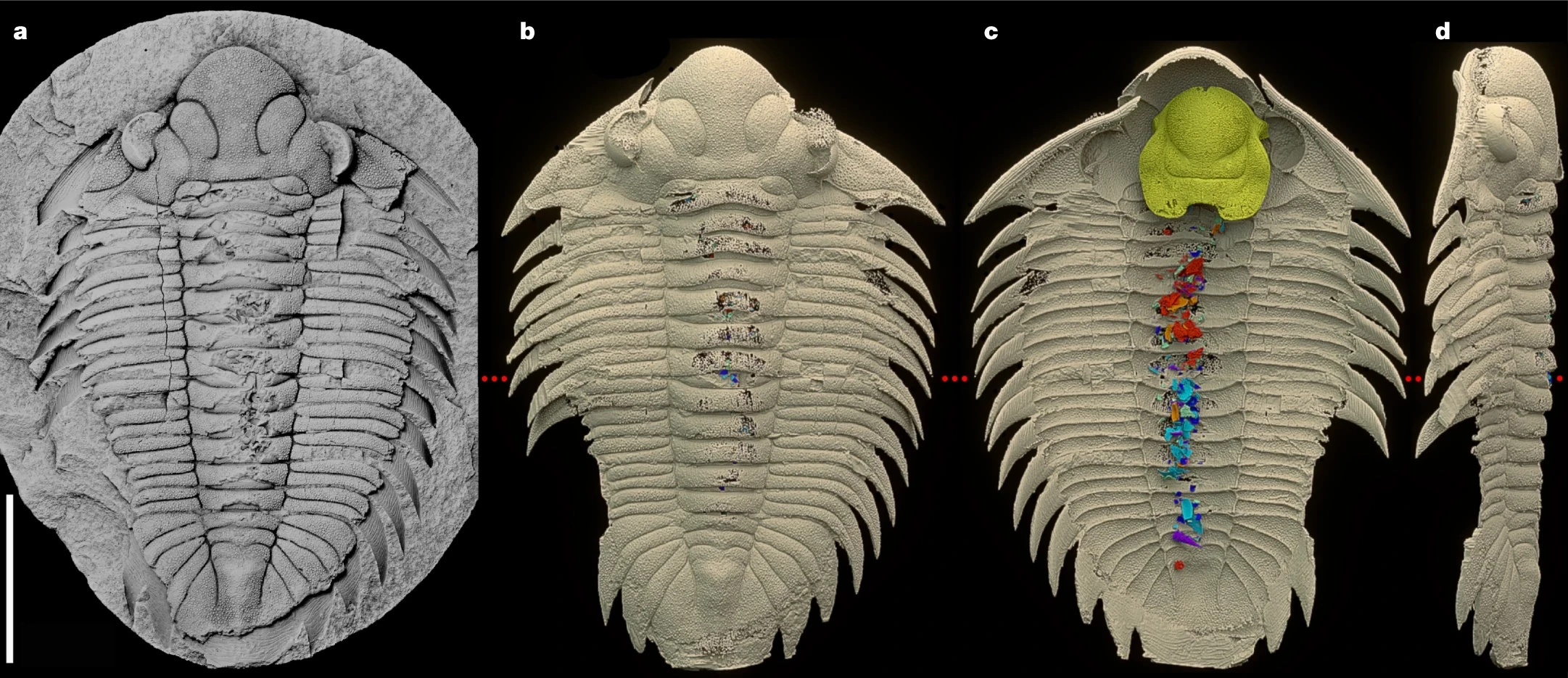Some 465 million years since this marine scavenger was caught unawares by an approaching deadly mud current that would bury it alive, it had spent its last hours enjoying a large, varied seafood menu that has, until now, not been pictured in such detail in preserved fossils of its kind.
Using synchroton radiation X-ray microtomography, researchers from Charles University in the Czech Republic have pieced together the last supper of the Ordovician trilobite, Bohemolichas incola. And what they found in its digestive tract was quite the meal: a tightly packed trail of calcareous shells and their fragments, once belonging to invertebrates such as ostracods, bivalves and echinoderms, and some even identifiable to species level.
"The non-selective feeding behavior of B. incola suggests that it was predominantly an opportunistic scavenger," the researchers noted. "B. incola can be considered as a light crusher and chance feeder, hoovering up dead or living animals that were either easily disintegrated or small enough to be swallowed whole."
It’s the first time we have been able to spy into the guts of the prolific trilobite, one of around 20,000 species so far described. They formed a vital part of the marine ecosystem during their time on the planet, which spanned some 270 million years.
This particular fossil was discovered in 1908 and has been housed in a museum in the Czech town of Rokycany. It had been preserved in what's nicknamed a ‘Rokycany ball,’ silicified concretions that have proved to be a fortuitous fossil storage system for paleontologists studying specimens from this period.
"I remember this specimen from my childhood," says first author Petr Kraft, from the Faculty of Science at Charles University. "It was my grandfather's favorite fossil. That is why its photo once hung in the office of palaeontology at the Rokycany museum, where he volunteered."
More recently, scientists noticed shards of shell sticking out of the trilobite’s trunk, but needed to find a way to examine the fossil without destroying it altogether.
They found the answer in France, at the European Synchrotron Radiation Facility, using an imaging technique that one researcher had first trialed on vertebrate teeth in 2020.

“Obtaining slice images, similar to what most people know from hospital CT scans, is only the first step,” said co-author says Valéria Vaškaninová. “This is followed by manual segmentation of individual structures using a reconstruction software. The three-dimensional model of the fossil is then rendered in a virtual photo studio, which increases the image depth and results in an extremely informative figure."
The researchers not only rendered the animal’s last opportunistic feed in great detail, they were also able to see how once it died, it had other others assume the scavenger role. However, these unlucky feeders also ended up in the Rokycany ball, the earthy tomb they’d remain in for nearly half a billion years.
They also were able to note that the shape of the arthropod's exoskeleton suggested it was about to undergo its routine molt, much like that of its present-day relatives.
"We suggest that the feeding behavior of the trilobite may have resembled the corresponding life cycles of modern crustaceans," the researchers noted.
The research was published in the journal Nature.
Source: Charles University via Nature






